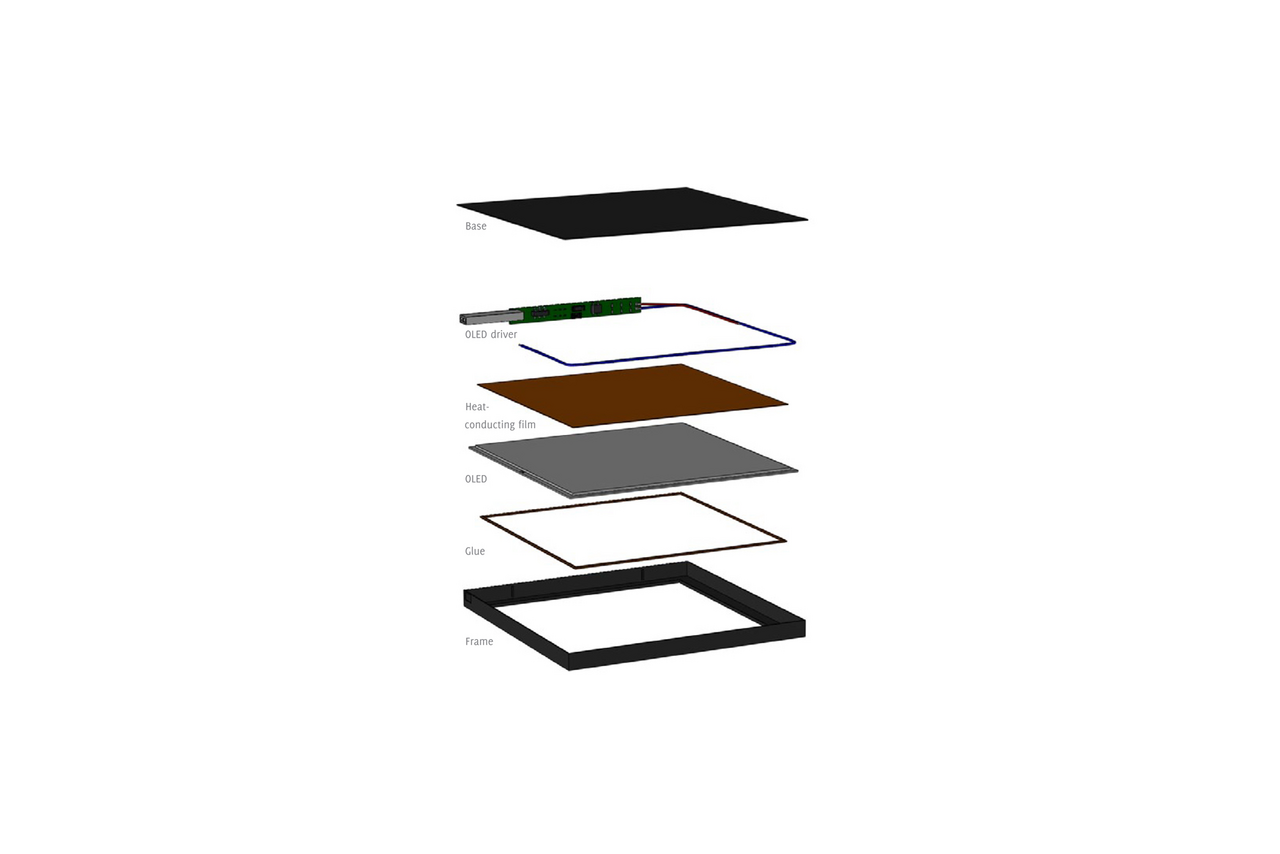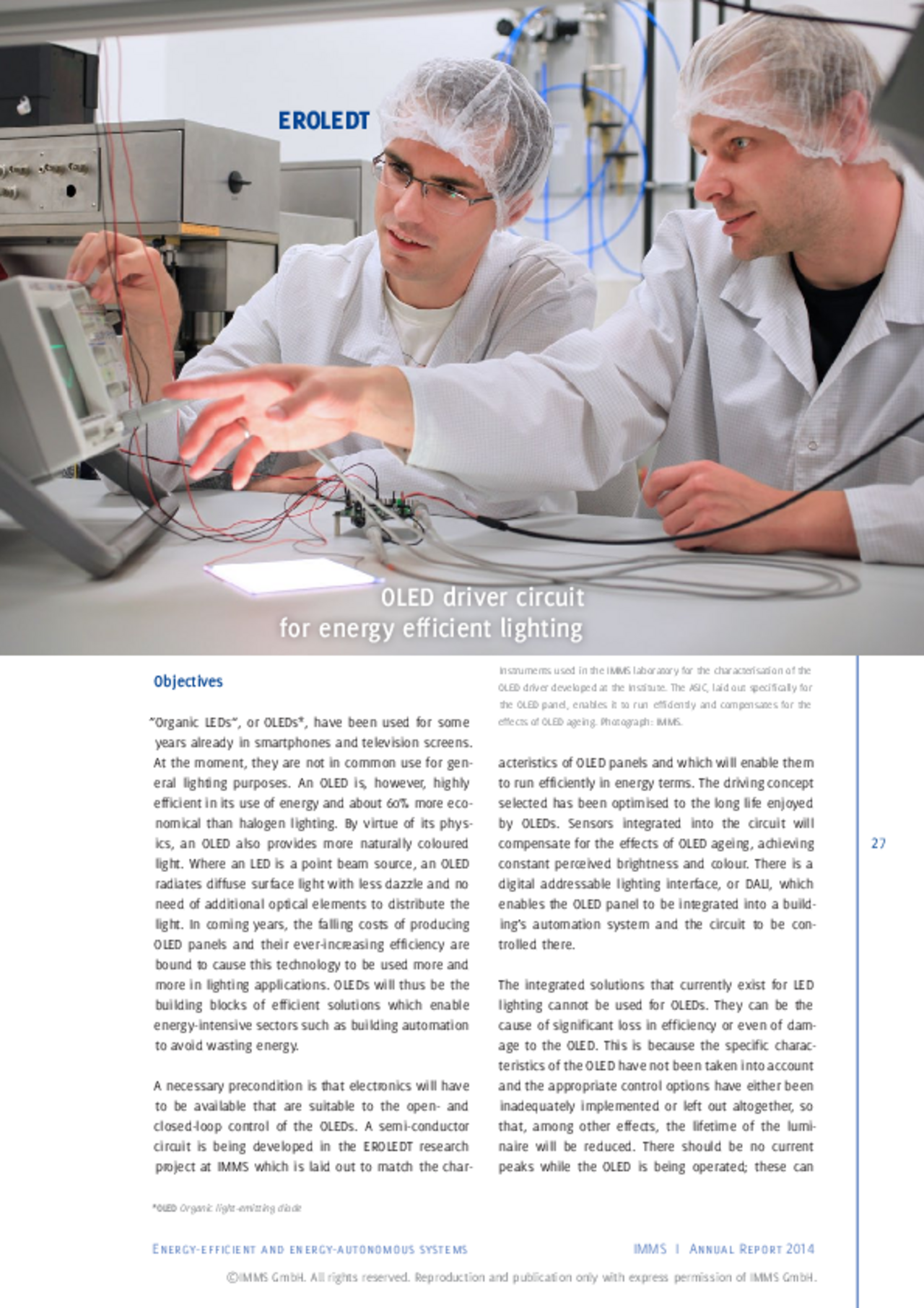Project EROLEDT
The ASIC developed by IMMS will enable organic LEDs to run efficiently in energy terms over a long life cycle.
”Organic LEDs“, or OLEDs, have been used for some years already in smartphones and television screens. At the moment, they are not in common use for general lighting purposes. An OLED is, however, highly efficient in its use of energy and about 60% more economical than halogen lighting. By virtue of its physics, an OLED also provides more naturally coloured light. In coming years, the falling costs of producing OLED panels and their ever-increasing efficiency are bound to cause this technology to be used more and more in lighting applications.
A necessary precondition is that electronics will have to be available that are suitable to the open- and closed-loop control of the OLEDs. The integrated solutions that currently exist for LED lighting cannot be used for OLEDs. They can be the cause of significant loss in efficiency or even of damage to the OLED.
A semi-conductor circuit has been developed in the EROLEDT research project at IMMS which is laid out to match the characteristics of OLED panels and which will enable them to run efficiently in energy terms.
The driving concept selected has been optimised to the long life enjoyed by OLEDs. Sensors integrated into the circuit will compensate for the effects of OLED ageing, achieving constant perceived brightness and colour. There is a digital addressable lighting interface, or DALI, which enables the OLED panel to be integrated into a building’s automation system and the circuit to be controlled there.
Acronym / Name:
EROLEDT / Energy- and resource-efficient OLED driverDuration:2013 – 2014
Application:
|Lighting technology| room illuminationResearch field:Integrated sensor systems
Related content
Neuentwicklung und Optimierung eines Treiber-ASIC für Energie- und ressourceneffiziente Ansteuerung von OLED-Modulen
Gerrit Kropp. Michael Meister.in Elektronik Praxis, September 2014, Seite 30 – 32
Neuentwicklung und Optimierung eines Treiber-ASIC für Energie-und ressourceneffiziente Ansteuerung von OLED-Modulen
Georg Gläser. Gerrit Kropp. Michael Meister.LED- und OLED Praxisforum, 02.06.2014 - 03.06.2014, Würzburg, Vortrag
Contact
Contact
Eric Schäfer, M. Sc.
Head of Microelectronics / Branch Office Erfurt
eric.schaefer(at)imms.de+49 (0) 361 663 25 35
Eric Schäfer and his team research Integrated sensor systems, especially CMOS-based biosensors, ULP sensor systems and AI-based design and test automation. The results are being incorporated into research on the lead applications Sensor systems for in-vitro diagnostics and RFID sensor technology. It will assist you with services for the development of Integrated circuits and with IC design methods.
Funding
The work that has led to these results received funding from the ”Land“ of Thüringen and the European Union (EFRE) under the reference 2012 FE 9045. Only the author is responsible for the content of this publication.








